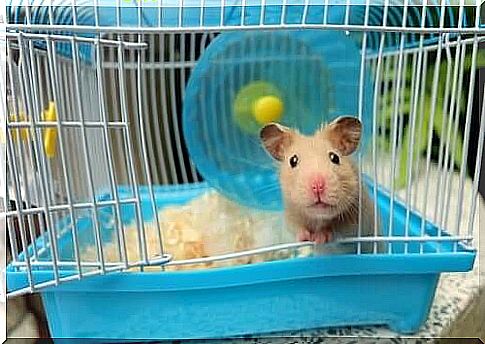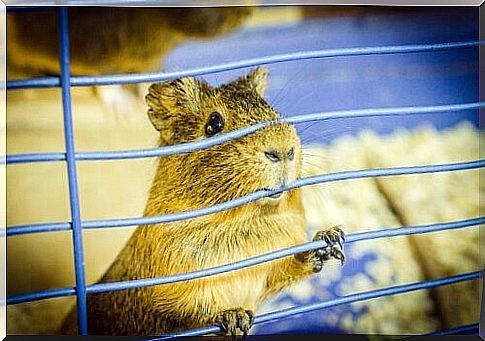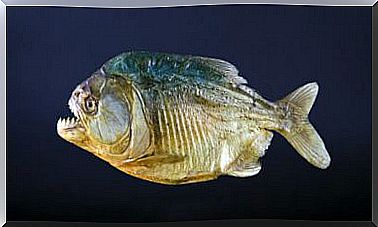4 Tips For Cleaning The Hamster Cage

Hamsters are very delicate animals that can easily get sick if their environment is not clean enough. Therefore, if you have decided to adopt one of these rodents as a pet, it will be essential to know how to clean the hamster cage.
Discover our tips for cleaning the hamster cage. Take good care of your little rodent friends!
How often should the hamster cage be cleaned?
As for the ideal cleaning frequency of the cage, regular maintenance is required. It is recommended to clean the feeder and change the water daily, to avoid the accumulation of food residues on the substrate and impurities in the water.
It will also be important to check the cage at least once a day to check for the accumulation of droppings. With the help of a shovel or spatula, the remains of food and excrement can be removed, keeping the rodent’s environment clean.
Complete cleaning of the cage should be done at least twice a month. In this regard, we remember the importance of opting for a quality cage, made with resistant materials. These types of cages allow for deeper cleaning without damaging the structure.

4 tips for cleaning the hamster cage
1. Prepare a quiet place for your hamster
Before you start cleaning your hamster cage, you will need to prepare a quiet place for the rodent to stay while you clean calmly. Since hamsters are easy prey for many predators in their natural habitat, they must always be aware of any alterations in their environment.
Being so delicate, these rodents can easily develop symptoms of stress, which negatively affects their health and behavior. The owners have the task of reducing these inconveniences to ensure an excellent quality of life for their pet.
The ideal would be to have an extra cage or a properly demarcated area where the hamster can play and practice while cleaning his cage. To make him feel comfortable, you can give him his favorite toys or a gift.
2. Do not use corrosive, irritating or aggressive products
Due to the strong odor and disinfectant action, it is common to think that aggressive products, such as bleach or chlorine, are the most “effective” for cleaning the cage. However, these types of products are not effective in cleaning organic matter or its residual odors.
Furthermore, corrosive or irritating cleaning products are harmful to the health of our pets. Its compounds can cause skin allergies, hair loss, mucosal irritation and respiratory problems.

To clean the hamster cage, the ideal is to use mild soap or enzyme-based cleaners. To enhance their action it is recommended to use warm water and a sponge or brush that allows you to properly clean all corners of the cage. If necessary, we also recommend using a spatula to remove residues.
3. Remove all accessories from the cage
To properly disinfect your rodent’s environment, it will be essential to remove all accessories from inside the cage. Before wetting it, also remove all the soil substrate and any dry residues with a spatula.
This occasion will be ideal for thoroughly washing all the accessories used by the rodent. You will need to pay special attention to the manger and trough, as they constantly receive organic matter.
It will be best to leave the cage and accessories soaked for 15-20 minutes in warm water to soften the soaked dirt. This will make cleaning easier.
4. Baking soda helps prevent bad odors
There are several types of substrate made specifically for the hamster cage. Some of these products even help prevent unpleasant odors from rodent urine and feces.
However, a very inexpensive way to avoid bad smells in the hamster cage is to use a teaspoon of baking soda on the substrate. In addition to absorbing unwanted odors, this compound has an antiseptic action, which helps prevent the proliferation of bacteria.









